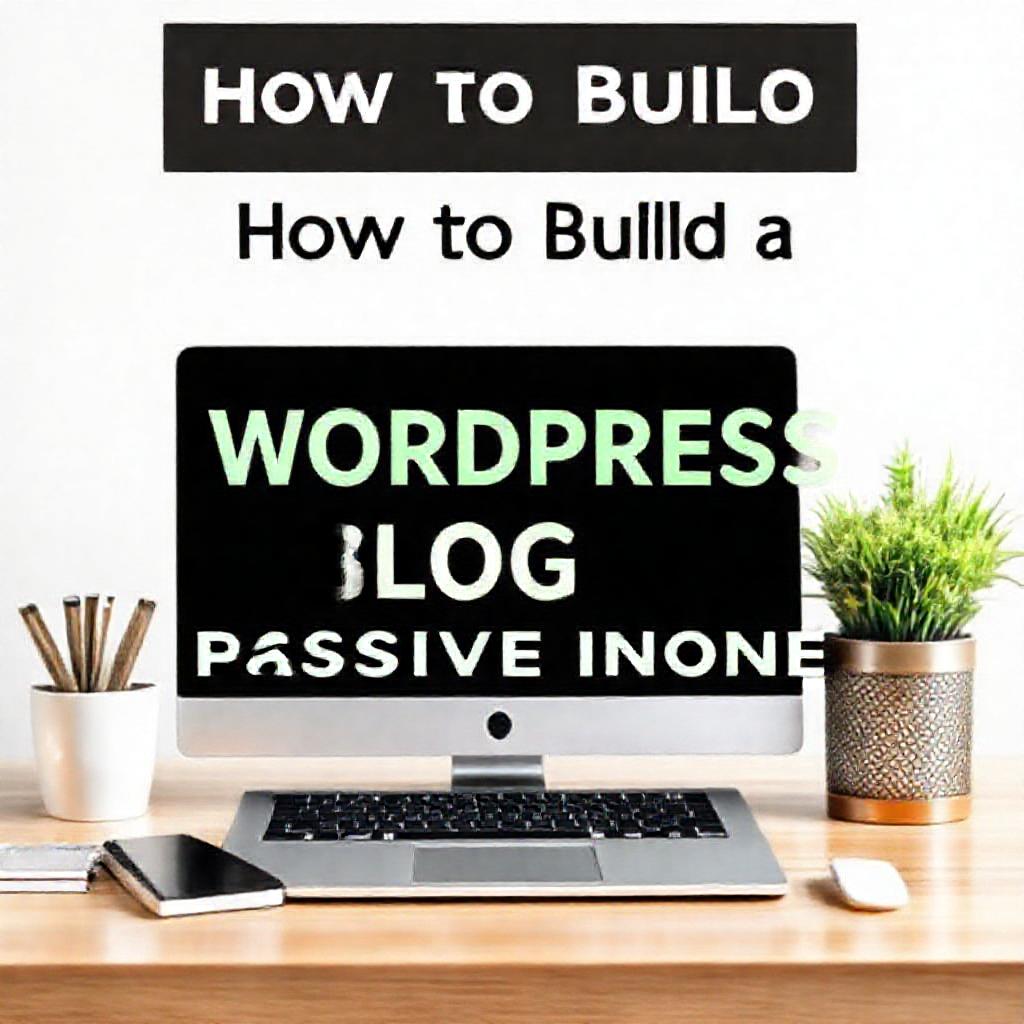Dreaming of making money while you sleep? Building a WordPress blog for passive income is one of the most effective ways to turn your expertise into a sustainable revenue stream. With the right strategy, your blog can generate earnings from affiliate marketing, ads, digital products, and more—all while requiring minimal daily upkeep. WordPress, the world’s most popular blogging platform, offers unparalleled flexibility, scalability, and monetization options, making it the perfect choice for aspiring passive income bloggers. Whether you’re a beginner or an experienced writer, this step-by-step guide will walk you through everything you need to know to launch and grow a profitable blog.
Step-by-Step Process
Choose Niche & Domain
Select a profitable niche and register a domain name.
Install WordPress
Set up WordPress on your hosting platform.
Design & Optimize
Customize theme, plugins, and SEO settings.
Create Quality Content
Publish valuable posts to attract organic traffic.
Monetize Strategically
Add ads, affiliates, or digital products for revenue.
Process infographic for How to Build a WordPress Blog for Passive Income
Choosing the Right Niche for Passive Income
Why Niche Selection Matters
Selecting a profitable niche is the foundation of a successful passive income blog. A well-chosen niche ensures a steady flow of engaged readers and higher monetization potential. Avoid oversaturated markets like “weight loss” or “make money online,” as competition can make it difficult to stand out. Instead, focus on sub-niches with dedicated audiences, such as “keto meal plans for busy professionals” or “side hustles for stay-at-home parents.”
Top Profitable Blogging Niches
Some of the most lucrative niches for passive income include:

- Personal Finance: Budgeting, investing, and debt management.
Researching Your Niche
Before committing to a niche, use tools like Google Trends, SEMrush, or Ahrefs to assess demand and competition. Analyze top-performing blogs in your niche to identify content gaps and discover what resonates with readers. For example, if you’re blogging about personal finance, check which topics (e.g., “how to save for a house”) generate the most traffic.
Setting Up Your WordPress Blog
Domain Name & Web Hosting
Choose a memorable domain name that reflects your niche (e.g., SmartMoneyTips.com for a finance blog). Opt for a reputable hosting provider like Bluehost, SiteGround, or WP Engine, which offer one-click WordPress installation and reliable uptime. Shared hosting plans start at just $3–$5 per month, making it affordable for beginners.
Installing WordPress
Most hosting providers offer automated WordPress installation. Once installed, set up essential plugins:
- Yoast SEO: Optimizes content for search engines.
Choosing a Theme
Select a fast, mobile-responsive theme. Free options like Astra or GeneratePress are beginner-friendly, while premium themes (e.g., Divi) offer advanced customization. Prioritize speed and readability to improve user experience and SEO rankings.
Creating High-Quality Content for Passive Income
Content Strategy for Monetization
Focus on content that attracts traffic and converts readers into buyers. For example:
- Guides: “How to Start Investing in Stocks for Beginners”
Long-form content (1,500+ words) tends to rank higher in search engines, while short-form posts (500–800 words) work well for quick tips.

SEO Optimization for Passive Income
Optimize posts with target keywords, meta descriptions, and internal links. Use Yoast SEO to analyze readability and keyword density. Submit your blog to Google Search Console to track performance and fix indexing issues.
Content Publishing & Scheduling
Publish consistently—aim for 1–2 posts per week. Tools like CoSchedule help automate scheduling and social media promotion, ensuring steady traffic flow.
Monetization Strategies for WordPress
Affiliate Marketing
Join programs like Amazon Associates, ShareASale, or CJ Affiliate. Write honest, detailed reviews (e.g., “Best VPN Services in 2024”) and include affiliate links naturally in your content.
Display Advertising (AdSense, Mediavine, AdThrive)
Google AdSense is beginner-friendly, while Mediavine and AdThrive offer higher payouts for blogs with 50,000+ monthly visitors. Place ads strategically—above the fold, within content, and in sidebars.
Selling Digital Products & Services
Create e-books, online courses, or memberships. Use WooCommerce or Easy Digital Downloads to sell directly on your blog. For example, a fitness blogger could sell a “30-Day Workout Plan” PDF.
Sponsored Posts & Brand Collaborations
Partner with brands for paid content. Use platforms like AspireIQ to connect with sponsors. Disclose partnerships transparently to maintain reader trust.
Driving Traffic to Your Blog
Social Media Promotion
Leverage Pinterest (great for visual niches), Facebook groups, and Twitter. Automate sharing with Buffer or Tailwind to save time.

Email Marketing for Passive Income
Build an email list with ConvertKit or Mailchimp. Send newsletters with affiliate offers, exclusive content, and promotions to nurture subscribers.
Guest Blogging & Backlinks
Write guest posts for high-authority sites to build backlinks and drive referral traffic. Example: Pitch a finance article to a popular business blog.
Scaling Your Blog for Long-Term Passive Income
Outsourcing & Delegating Tasks
Hire freelancers from Upwork or Fiverr for writing, editing, and graphic design. This frees up your time to focus on strategy and growth.
Automating Blog Management
Use tools like Grammarly (for proofreading), Pretty Links (for affiliate link management), and Google Analytics (for tracking performance).
Analyzing Performance & Adjusting Strategy
Monitor traffic and earnings with MonsterInsights. Double down on high-performing content and tweak underperforming posts.
Conclusion
Building a WordPress blog for passive income requires patience, consistency, and smart monetization strategies. By selecting a profitable niche, creating high-quality content, and leveraging multiple income streams, you can turn your blog into a sustainable business. Start today, stay committed, and watch your earnings grow over time. The key is to take action and refine your approach as you go.
FAQ Section
Q1: How much money can I make from a WordPress blog?
A: Earnings vary based on traffic, niche, and monetization methods. Some bloggers earn $1,000/month, while others make six figures.
Q2: How long does it take to start earning passive income?
A: Typically 6–12 months of consistent effort, but strong SEO and promotion can yield results in 3–6 months.
Q3: Do I need technical skills to start a WordPress blog?
A: No, WordPress is beginner-friendly. Plugins and themes simplify the process.
Q4: Is affiliate marketing the best way to make passive income?
A: Affiliate marketing is popular, but combining multiple methods (ads, digital products, sponsorships) maximizes earnings.
Q5: Can I run a WordPress blog on a budget?
A: Yes, you can start with minimal costs using free themes, plugins, and affordable hosting plans.





